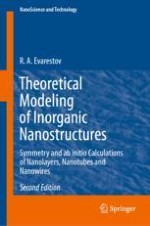This book summarizes the state of the art in the theoretical modeling of inorganic nanostructures. Extending the first edition, published in 2015, it presents applications to new nanostructured materials and theoretical explanations of recently discovered optical and thermodynamic properties of known nanomaterials. It discusses the developments in theoretical modeling of nanostructures, describing fundamental approaches such as symmetry analysis and applied calculation methods. The book also examines the theoretical aspects of many thermodynamic and the optical properties of nanostructures. The new edition includes additional descriptions of the theoretical modeling of nanostructures in novel materials such as the V2O5 binary oxide, ZnS, CdS, MoSSe and SnS2.
